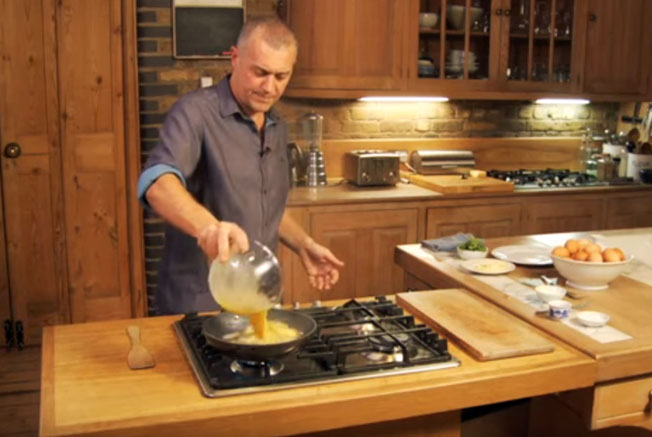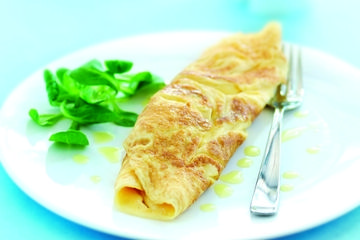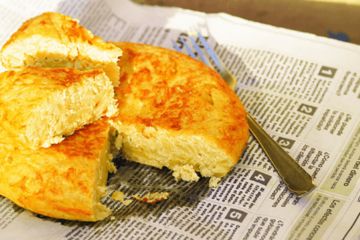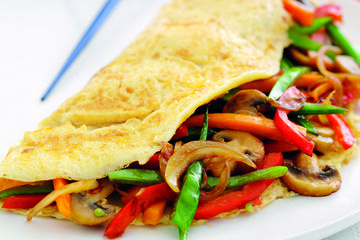How to make an omelette
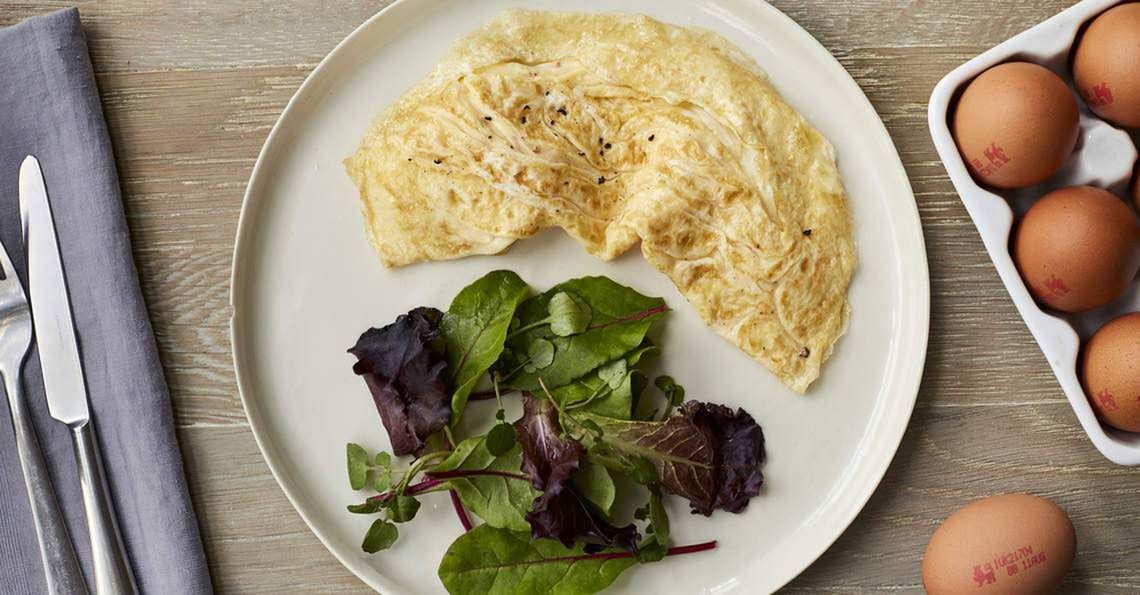
How to make an omelette? The quick answer is: mix eggs with water, season, then add the mixture to a pan on a high heat. For more information, follow our simple seven step method below.
Omelettes are healthy, quick and perfect for breakfast, lunch or dinner. Enjoyed by the whole family, from kids and babies to expectant mothers, they are one of the most popular and versatile dishes.
- Serves: 1
- Prep: 2 mins
- Cook: 2 mins
Costs less than: £1.00
Omelette ingredients
- 2 large British Lion eggs
- Pinch of salt and pepper
- 1 tsp cold water
- Dash of oil
Method steps


Nutritional information
Nutritional information, per serving:
| Calories | Protein | Fat | Saturates | Salt |
|---|---|---|---|---|
| 166 | 16.4g | 11.8g | 3.1g | 1.0g |
An omelette is a delicious, nutrient dense meal perfect for breakfast, lunch, or dinner; omelettes are also a perfect carrier for any number of delicious fillings. But even filling-free, made in the microwave or a pan, with oil or butter, the plain omelette is packed full of protein, vitamins and minerals and is super satiating – it will keep you fuller for longer – and at less than 200 calories for a 2-egg omelette, a great choice for anyone watching their weight.
Recipe tips
- Room temperature eggs will form an omelette in the pan quicker than eggs that are cold from refrigeration.
- Pan size matters. A large pan could cause the omelette to spread too thinly which is more prone to overcooking, while a small pan could make the omelette too spongy and thick to fold. Sticking to a regular pan (around 22cm) should help you create the right texture and depth for a two-egg omelette.
- If you’re making a breakfast omelette, you could prepare all your ingredients the night before so you can blitz through the process when you wake up.
How to make a fluffy omelette
Egg lovers around the world will know all too well of the fabled fluffy omelette: a melt-in-your-mouth dish which can make your meal go from good to great. Many people struggle when attempting to fluff up their omelettes, but by following just a few simple steps you’ll have the art cracked in no time at all!
Preparing your pan
Having your pan just right is essential if you want to get your omelette fluffy and by using a combination of vegetable oil and a knob of butter you can do just that. Not only will this prevent the omelette from sticking, but the butter will also give a burst of indulgent flavour as well as adding a little golden colour to the finished product.
For restaurant quality fluffy eggs, whisk them!
When making your standard omelette you can get away with briskly beating your eggs side-to-side with a fork for 10 seconds or so, but if you want your dish light and fluffy you’re going to need a bit more elbow-grease. This is where a whisk comes in handy! By getting more air in the mixture you’re more likely to get that fluffy finish, so get stuck in and give them a good mix for 30 seconds until the top layer has a thick, frothy foam.
Do you add milk to an omelette?
Many people add either milk or cream to their omelettes in order to bulk them out and have a more substantial dish without the need to add an extra egg. While this does work, it’s crucial not to go overboard or you’ll end up with a mixture that’s too loose. Add no more than a tablespoon of milk or cream before whisking for that extra creaminess.
Cooking
Cook your mixture as you would any other omelette: make sure you keep a medium heat so nothing burns and only add the mixture once the butter foam begins to die down. Add your mixture, distribute around the pan evenly and once the egg has begun to form a more solid body, flip and cook through for another 10-20 seconds – it’s as simple as that!
How to make a cheese omelette
The plain cheese omelette is perhaps the easiest starting point when learning how to cook a simple and tasty meal. In fact, sometimes it really can’t get any better. Begin by cracking your eggs into a bowl (2 or 3) and adding a light seasoning of salt and black pepper before you begin whisking the egg. For a fluffy omelette add a splash of milk or cream and whisk vigorously for around 30 seconds, or as foam begins to appear on the top of the mixture. The more foam that appears the fluffier it will be, but don’t go overboard!
Getting things ready for the pan
Put your mixture to one side and heat a standard sized frying pan with vegetable oil on a medium heat. Whilst you’re waiting for your pan to heat you can now start to prepare your cheese! If you’re using a hard cheese such as cheddar then grating it is preferable; for soft and crumbly cheeses such as goats, brie or stilton, thinly slice it into smaller chunks so it can quickly melt when added to the mixture.
Time to cook!
When your pan has just started to smoke, pour in the mixture and make sure that it’s evenly spread around the pan. After 10 seconds of cooking – before the egg begins to set – take your spatula and gently move it round the edges of the omelette to allow the runny egg to flow out to the side to form a better shape and ensure it doesn’t stick when you need to flip. Around 20-30 seconds into cooking the omelette will begin to form. At this stage evenly sprinkle or add in the prepared cheese across the omelette, along with any additional seasoning of your choice and cook for a further minute. To flip, gently edge the spatula under one side of the omelette and guide it onto the other to ensure it doesn’t break. Cook through for another 10-15 seconds, or to your preferred consistency. Slide the finished dish onto a plate and serve!
Video: How to make an omelette
Watch the video to find out how to quickly make the perfect omelette with celebrity chef Paul Merrett using British Lion eggs.
More omelette recipes
Omelette recipes can be as simple or extravagant as you want, and with just a couple of eggs and a pinch of salt you can whip up a tasty meal in minutes, or add your own personal flair with a whole range of filling ingredients. There are so many omelette fillings to choose from - the ham, tomato and cheese omelette is a classic choice, but there are plenty of other adventurous options.
